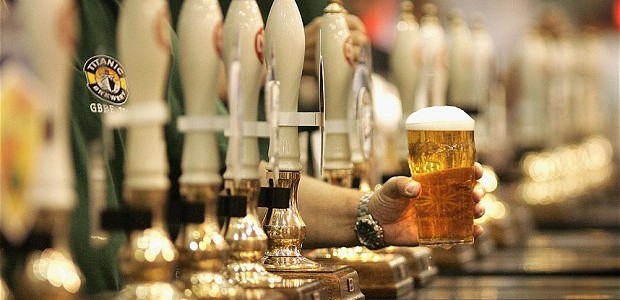20 Craft Beer Terms To Learn To Become an Expert
Original Article from foodrepublic.com
As craft beer continues to dominate the drinking scene, many bars — even those not specific to craft beer — have started to include detailed information of style and even brewing conditions on menus. Do you know your firkin from your carboy? Are you down with the grist? Indeed, this all can get pretty confusing at times. But you are in luck. Below are the 20 most crucial terms to memorize and use. May you relish in the esters of the finest Grand Cru.
- ABV: Short for Alcohol by Volume, this indicates the amount of alcohol in a beer.
- Adjuncts: Substitutes for fermentable grains such as rice and corn. Sometimes used to make a lighter beer, but also to cut costs. Adjuncts are common in macro U.S.-made beer, especially the American Adjunct Lager style. Also found in traditional Japanese rice lagers and in some craft beers — to smooth out flavor, such as in Kuhnhenn’s excellent Double Rice IPA.
- Alpha acids: The main bittering agent in hops.
- Bomber: Slang for a 22-ounce bottle of beer.
- Bottle-conditioned: Yeast is left in the bottle to induce further development over time, known as secondary fermentation. This is highly desirable. As the beer changes, more complex flavors and aromas form.
- Bung: Can refer both to the hole and the cylindrical stopper in a cask, keg or barrel.
- Carboy: A clear glass or plastic container commonly used for homebrewing. Each container typically holds 20 to 60 liters used for fermenting beer.
- Cask: A container of beer, typically made of metal, used to hold live ale as it ferments. The beer is not initially force carbonated, but gains natural carbonation in the cask over time as yeast is introduced. So-called “cask beer” is traditionally served slightly warmer in temperature than draft beer.
- Coolship: A large shallow container used to cool wort (the liquid containing grain sugars yielded at the end of the malting process) while exposing it to outside temperature and wild yeast. The beer is then transferred to barrels for fermentation. Traditionally used by Belgian brewers, coolships have been adapted by many U.S. breweries as a more natural way of creating beer.
- Esters: An aroma or flavor of fruits and/or spices brought on during fermentation. This is a prominent characteristic in Belgian ales due to their unique yeasts.
- Fermentation: This is the conversion of sugars into alcohol, which takes place from exposure of yeast to sugars.
- Firkin: A type of cask traditionally used by British brewers to bring beer to the pub. Today it’s the most common size of cask, which holds 10.8 US gallons of cask-conditioned ale.
- Fobbing: When beer foams during production, bottling or on draught. Fobbing can also refer to a tap line that’s taken on too much foam, to the point where the presence of foam is actually causing significant loss of beer. This is however a positive thing during bottling — foam pushes out excess oxygen from the bottle, providing a tighter seal once capped.
- Grand Cru: A technique traditionally used in winemaking, adapted by brewers. While it’s not a regulated term, it generally means a stronger, more balanced version of a standard beer.
- Grist: The combination of different milled grains in a beer’s composition.
- IBU: Short for International Bitterness Units, the standard for determining the concentration of alpha acids (see above) that impart bitterness in beer.
- Infection: This is a term that gets thrown around a lot with both negative and positive implications. In traditional sour ales, such as Flanders Red, wild yeast is naturally introduced to beer to create the pleasant acidic quality. But if a beer is infected in the bad sense, the biggest giveaway is a strong sourness or funk. If it gushes out of a glass with foam, it’s definitely turned. In rare cases, especially with beers containing Pedioccocus yeast, you might even get slime.
- Lightstruck: Also referred to as “skunked,” lightstruck beer happens when hops are exposed to light, not limited to but often as a result of being exposed to the sun. Clear or green bottles are much more susceptible to skunking.
- Oxidation: As beer ages, it runs the risk of being exposed to oxygen. This is generally undesirable as it can impart flavors of stale fruit and wet cardboard, but in barleywines and stouts, oxidation can actually play an important part in flavor development. For example, a more coffee-forward young malt can age to taste like dark chocolate, almost completely devoid of coffee flavor.
- White Whale: A really rare beer, often unavailable for many years and requiring trading many other rare beers to acquire just one bottle.
Now go out and drink beer like a pro!


Comments are closed.